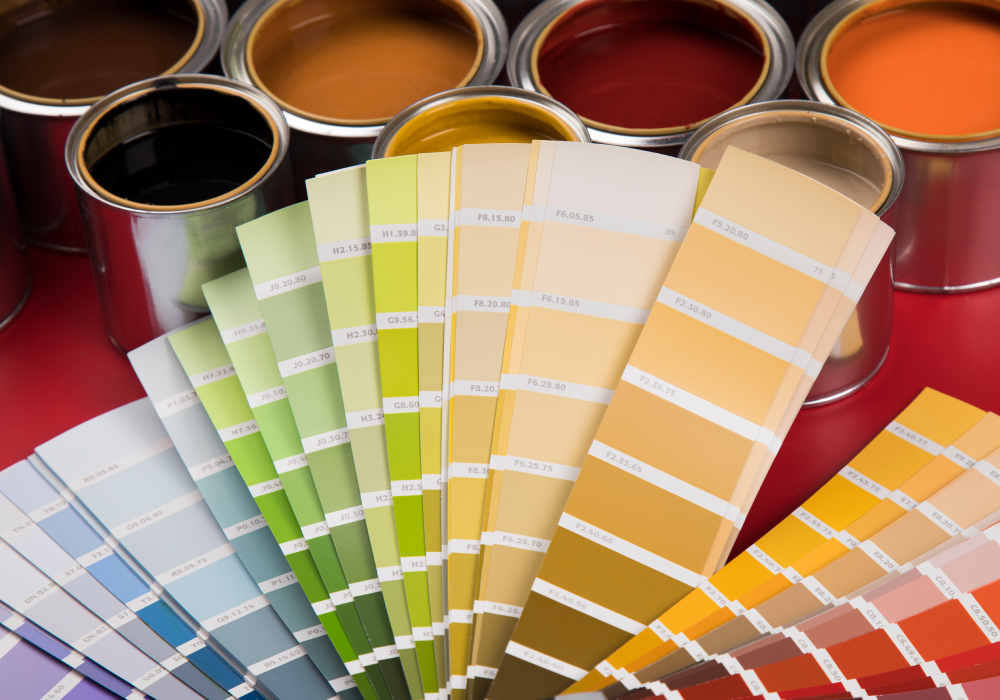Inside Birla Opus’ rapid rise in the list of India’s top decorative paint brands
- Copy
In early 2024, Grasim Industries committed one of the largest single capital outlays in its history to a business it had never operated before. A ₹10,000 crore investment into decorative paints was announced, aimed at building a new national brand, Birla Opus Paints. At the time, industry observers described the move as ‘ambitious’; especially in a market long regarded as consolidated and difficult. Yet by March 2025, Birla Opus had emerged among the top three decorative paint brands in India by revenue share. This is as per the FY 2024-25 exit run-rate and internal estimates of the company.
The runway to disruption
The foundation for this rapid entry was laid years earlier. Planning began more than three years before launch, with manufacturing capacity, supply lines, and distribution designed to operate at full national scale from day one. By the end of FY25, five greenfield plants—at Panipat, Ludhiana, Cheyyar, Chamarajanagar, and Mysore—were operational, delivering a consolidated 1,096 million litres per annum capacity. A sixth plant at Kharagpur is scheduled to begin production in FY26, bringing total capacity to 1,332 MLPA. Once completed, Birla Opus will become the second largest player by installed capacity.
Plant locations were mapped against demand centres to reduce delivery times and transport costs. By the end of FY25, each site was positioned to serve key consumption corridors efficiently. Supporting these facilities is a distribution system of 137 depots, enabling service to more than 6,600 towns, an infrastructure footprint rarely achieved in such a compressed time frame.
Birla Opus’ public introduction was built as much around experience as supply. In March 2025, the company launched its first flagship paint studio in Gurugram. Designed to engage homeowners, architects, and designers, the studio showcases finishes, textures, and colours in an interactive format. More such studios are being rolled out in metro cities, complemented by smaller-format outlets and franchise galleries in semi-urban and rural areas.
Meanwhile, in August 2026, emboldened by the product quality, the brand launched Birla Opus Assurance’. This initiative, a first-of-its-kind assurance in the Indian paint industry commits to redo the painting service completely free of charge under its one-year re-painting warranty. Fastest growing decorative paint brand It has been thoughtfully designed to cover all possible weather conditions, ensuring that the walls have withstood and been tested across all four seasons.
Against the odds
Remarkably, Birla Opus has been expanding Indian paints sector during a period when industry demand has been muted. Several industry reports highlighted FY25 as one of the most subdued years in two decades for decorative paint volumes. Yet Birla Opus continued to grow, supported by structured dealer incentives and the rapid rollout of tinting machines. By FY25, the brand had already onboarded close to 50,000 dealers, giving it shelf presence across much of the country. Overall, the decorative paint business hinges on a strong distribution strategy. The wider and deeper the presence, the better it is for any brand. Birla Opus could leverage the wide penetration and distribution network of UltraTech Cement – the building solutions flagship of Aditya Birla Group.
The brand’s product portfolio reflects a comprehensive approach. As on March 2025, it offered 176 products across over 1,200 SKUs, covering all six decorative categories and multiple price points. This range positions Birla Opus to serve customers from mass-market emulsions to premium finishes.
The manufacturing network itself has been built to modern standards. Each plant operates on Industry 4.0 principles, with automated systems for colour consistency, solvent balancing, and production efficiency. Environmental sustainability is embedded into the design: all plants are equipped with zero-liquid discharge systems, recycling roughly 24,000 kilolitres of water annually back into production.
Financial targets have been equally ambitious. In its Q4 FY25 earnings call, Grasim, the holding company for Birla Opus, reaffirmed its revenue goal of ₹10,000 crore within three years of full-scale operations for Birla Opus. With capacity already in place, expanding distribution, and growing brand visibility, the trajectory remains consistent with these ambitions.
The road ahead
Looking ahead, the opportunities are structural. India’s per capita paint consumption is just above 3 kilograms, well below the global average of roughly 10 kilograms. Rising incomes, urban housing growth, and home renovation trends suggest demand will continue to grow through the next decade.
The entry of Birla Opus has demonstrated how a legacy conglomerate can move with the urgency of a start-up. By building capacity, distribution, and brand presence simultaneously, Aditya Birla Group has shown that even in mature markets, a new entrant can establish meaningful scale within a single year.
Whether this momentum will hold over the medium term is a question only the market can answer. But what is evident is that Birla Opus’ rise has altered perceptions of what is possible in India’s consumer manufacturing landscape. In the process, it has created a new template for brands to approach entrenched sectors: with capital strength, logistical precision, and a clear narrative designed to capture both market share and consumer imagination.

















